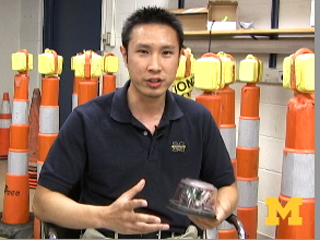Students create portable device to detect suicide bombers

According to latest reports, improvised explosive devices (IEDs), the weapons of suicide bombers, are responsible for about half of soldier casualties in Iraq and Afghanistan.
To help contain this urgent threat, specialized contractors are being called in to provide services like counter IED training and technologies like counter-IED jammers. But a group of undergraduate engineering students at the University of Michigan has developed a new way to detect IEDs that appears to be magnitudes cheaper than comparable approaches.
The students invented a wireless network of portable hand-held metal detectors that could be hidden in trash cans, under tables, in flower pots, and, ideally, in inconspicuous roadside objects, for example. The network of palm-sized detectors conveys to a base station where suspicious objects are located and who might be carrying them. Compared with existing technology, the sensors are cheaper, lower-power and longer-range. Each of the sensors weighs only about 2 pounds.
"Their invention outperforms everything that exists in the market today," said Nilton Renno, a professor in the U-M Department of Atmospheric, Oceanic and Space Sciences.
A video from the team illustrates the network and the background details of the project (3:40 min). The students recently won an Air Force-sponsored competition with Ohio State University.
The U.S. Air Force Research Laboratory at Wright Patterson Air Force Base sponsored the project as well as the contest. Such contests are regularly held across the country to "provide rapid reaction and innovative solutions to the Department of Defense's urgent needs," says Capt. Nate Terning, AFRL rapid reaction projects director.
The students will continue to work on this project through the summer. There is no information as to whether or not the Air Force plans to use the technology or aspects of it.
Source: U-M News Service
